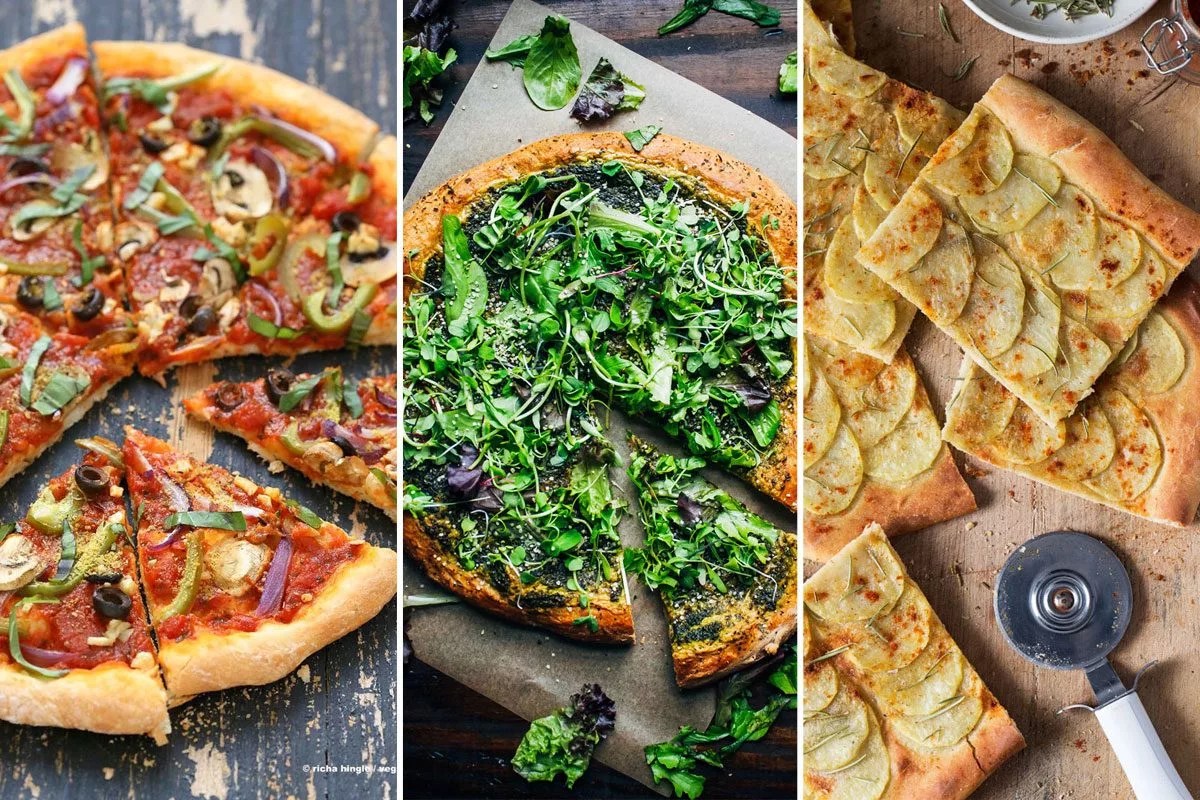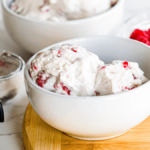Tired of the same old pizza toppings? Prepare for a culinary adventure! This guide unveils a world of delicious, nut-free pizza creations, bursting with vibrant flavors and textures. We’ll explore inventive topping combinations, from savory and spicy to surprisingly sweet, transforming your pizza night into a celebration of exciting taste experiences. Discover easy-to-follow recipes for thin crust, deep dish, and even gluten-free options, catering to diverse dietary needs and preferences. Get ready to elevate your pizza game with toppings that truly shine.
We’ll delve into the art of crafting the perfect crust, mastering topping distribution, and presenting your pizzas with flair. Learn how to adapt recipes to accommodate vegetarian, vegan, and gluten-free diets without sacrificing flavor or texture. This isn’t just about making pizza; it’s about creating a memorable culinary experience, from the first tantalizing aroma to the last satisfying bite. Each recipe is meticulously detailed, guiding you through every step with high-quality images and descriptive language, transforming your kitchen into a pizza paradise.
Nut-Free Pizza Topping Ideas

Pizza night just got a whole lot more exciting! For those with nut allergies or preferences, a world of delicious and diverse toppings awaits, bursting with flavor and texture. Let’s explore some creative nut-free options that will elevate your pizza experience.
Savory Topping Options
Savory toppings offer a range of umami and earthy notes, perfectly complementing the rich tomato sauce and cheese. The following selections provide a textural contrast and a depth of flavor to enhance your pizza.
- Sun-dried Tomatoes: Intensely flavorful and chewy, sun-dried tomatoes bring a concentrated sweetness and a pleasingly tangy bite. Their deep red color adds visual appeal to the pizza.
- Roasted Red Peppers: Sweet and slightly smoky, roasted red peppers offer a soft, yielding texture that contrasts beautifully with the crisp pizza crust. Their vibrant color adds a pop of freshness.
- Caramelized Onions: Sweet and savory, caramelized onions possess a deep, almost jam-like consistency with a rich, complex flavor that intensifies as they caramelize. They add a delightful textural element.
- Sautéed Mushrooms: Earthy and savory, sautéed mushrooms offer a meaty texture and a subtle, umami flavor. Cremini or shiitake mushrooms provide a more intense flavor profile.
- Spicy Italian Sausage: A classic pizza topping, spicy Italian sausage provides a savory, slightly spicy kick with a satisfyingly juicy and slightly firm texture.
Sweet and Savory Topping Options
These toppings blend the best of both worlds, creating a harmonious balance of sweet and savory flavors that will tantalize your taste buds.
- Fig Jam: Sweet and slightly tart, fig jam offers a luxuriously smooth texture and a rich, complex flavor that complements savory cheeses and meats exceptionally well. Its deep purple color adds a touch of elegance.
- Roasted Garlic: Sweet and pungent, roasted garlic provides a mellow, almost buttery flavor and a soft, spreadable texture that adds a subtle sweetness to the pizza.
Spicy Topping Options
For those who enjoy a fiery kick, these spicy toppings will add a thrilling dimension to your pizza.
- Jalapeños: With a vibrant green hue and a crisp, juicy texture, jalapeños deliver a burst of heat that ranges from mild to intense depending on the variety. Their bright color adds a lively contrast.
- Freshly Grated Parmesan Cheese: Although not spicy itself, the salty, sharp notes of Parmesan can cut through the richness of other toppings and enhance the spiciness of other ingredients.
Nutritional Comparison of Top 5 Toppings
The following table compares the nutritional value of five popular nut-free pizza toppings per 100g serving. Values are approximate and can vary based on preparation methods and specific ingredients.
| Topping | Calories | Protein (g) | Fiber (g) |
|---|---|---|---|
| Roasted Red Peppers | 26 | 1 | 2 |
| Sun-dried Tomatoes | 250 | 10 | 6 |
| Caramelized Onions | 170 | 2 | 2 |
| Sautéed Mushrooms | 22 | 3 | 2 |
| Spicy Italian Sausage | 350 | 15 | 0 |
Step-by-Step Pizza Making Guide (It’s all about recipe and step by step how to create it)
This guide details the creation of a delicious and nut-free Margherita pizza. We’ll focus on achieving a perfectly crisp crust and vibrant, flavorful toppings. The process emphasizes simple techniques to ensure a high-quality final product, even for beginner pizza makers.
Pizza Dough Preparation
First, we create the foundation of our pizza: the dough. The proper kneading and rising time are crucial for a light and airy crust. The process begins with combining the ingredients – flour, yeast, water, salt, and olive oil – in a large bowl. The resulting mixture, initially a shaggy mass, transforms into a smooth, elastic dough with a subtle, yeasty aroma as it’s kneaded. The color is a pale, creamy off-white, gradually becoming more consistent as gluten develops. The texture changes from sticky and wet to smooth and slightly tacky.
First Rise
After kneading, the dough is placed in a lightly oiled bowl, turned to coat, and covered with plastic wrap. This allows the dough to undergo its first rise, a crucial step for developing flavor and texture. The dough will visibly increase in size, becoming almost double its original volume. The subtle yeasty aroma intensifies during this process. The texture will be soft and puffy to the touch. The color remains largely unchanged. This rise usually takes around 1-1.5 hours in a warm place.
Sauce Preparation
While the dough rises, a simple yet flavorful tomato sauce is prepared. This involves simmering crushed tomatoes, garlic, oregano, salt, and pepper in a saucepan until slightly thickened. The aroma is rich and savory, with a distinct herbaceous note from the oregano. The color is a deep, vibrant red, deepening as it simmers. The texture transitions from chunky to slightly smoother.
Topping Preparation
For our Margherita pizza, we will use fresh mozzarella, sliced tomatoes, and fresh basil. The mozzarella, with its creamy white color and soft, yielding texture, is sliced to an even thickness. The ripe tomatoes, exhibiting a deep red hue, are sliced thinly, allowing for even cooking. The fresh basil leaves, a vibrant green, will be scattered over the pizza at the end.
Pizza Assembly
Once the dough has risen, it’s gently punched down and shaped into a round crust. The dough is then placed on a lightly floured pizza peel or baking sheet. The tomato sauce is spread evenly over the dough, leaving a small border for the crust. The mozzarella is arranged over the sauce, followed by the tomato slices. The aroma at this stage is a delightful blend of tomato, oregano, and the fresh, slightly milky scent of the mozzarella.
Baking
The pizza is baked in a preheated oven at a high temperature (approximately 450-500°F or 232-260°C) for 12-15 minutes, or until the crust is golden brown and crisp, and the cheese is melted and bubbly. The oven’s heat transforms the raw ingredients, creating a visually appealing pizza with a golden crust and melted cheese. The aroma intensifies, becoming a rich and inviting blend of baked dough, tomato, and cheese. The texture of the crust changes from soft to crispy, while the cheese melts into a smooth, gooey consistency.
Finishing Touches
Once removed from the oven, the pizza is garnished with fresh basil leaves. The basil’s vibrant green color contrasts beautifully against the red sauce and melted cheese. The aroma is now complete, with the fresh basil adding a final layer of herbal complexity. The pizza is then allowed to cool slightly before slicing and serving.
Reimagine pizza night with this comprehensive guide to nut-free toppings. From the vibrant colors and enticing aromas to the satisfying textures and diverse flavor profiles, each pizza becomes a work of art. With adaptable recipes catering to various dietary needs and creative presentation ideas, you’ll be equipped to craft unforgettable pizza experiences. Whether you’re a seasoned pizzaiolo or a kitchen novice, this guide provides the knowledge and inspiration to create truly exceptional, nut-free pizzas that will impress your family and friends. So, gather your ingredients, fire up your oven, and prepare to embark on a delicious journey!
Commonly Asked Questions
Can I use pre-made pizza dough?
Absolutely! Pre-made dough is a convenient option, saving you time. Just follow the baking instructions on the package.
How long can I store leftover pizza?
Store leftover pizza in an airtight container in the refrigerator for up to 3 days. Reheat gently in a pan or oven.
What are some good substitutes for common pizza cheeses?
Dairy-free alternatives include vegan mozzarella, cashew cheese, or nutritional yeast for a cheesy flavor.
Are there any specific tools needed for making these pizzas?
Basic kitchen tools like a pizza cutter, baking sheet, and measuring cups/spoons are sufficient. A pizza stone is recommended for crispier crusts.


